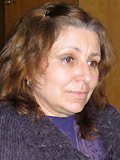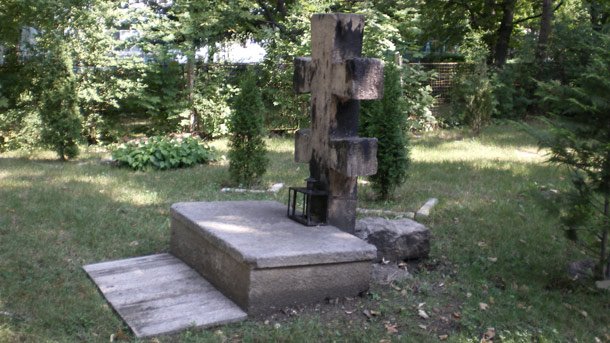On March 3, we celebrate 134 years since the liberation of Bulgaria from the Ottoman rule. It became possible after the Russo-Turkish War of 1876-1878. Following this war, many monuments in appreciation of the heroism and sacrifice of soldiers who gave their lives for this mission have been built. In honor of the liberation of Sofia, the largest cathedral in Bulgaria and one of the bigges ton the Balkans, the Alexander Nevski Cathedral, was built.
Another emblematic monument in Sofia is the one to the Tsar Liberator, located in the heart of the city. We have brought you more these monuments in our programs
Today with Katelina Saltirova-Pavlova, senior expert at the municipal company “Old Sofia” will tell you about four other memorials. One of them is the so-called Russian monument in central Sofia built with funds from the Russian people in 1882.  "This monument was erected on the site that was located outside the city at that time. The Bulgarian and Jewish cemeteries were located to the North of the city and to the southeast were the gardens of the citizens of Sofia. The location of the memorial is right on the way along which the Ottoman commander led his army out of the city, saving them from the Russian troops entering Sofia. It is believed that the design of the monument was made by one of two architects - Vokar of Constantinople or the Russian architect Vladimir Shervud who had the task to draw up designs for monuments of gratitude in the Bulgarian lands in Pleven, Shipka, Arabakonak and in all those places where Russian soldiers were killed. It is not clear which of these two architects is the author of the project. It was unveiled in June 29, 1882 by the Bulgarian Prince Alexander Battenberg.”
"This monument was erected on the site that was located outside the city at that time. The Bulgarian and Jewish cemeteries were located to the North of the city and to the southeast were the gardens of the citizens of Sofia. The location of the memorial is right on the way along which the Ottoman commander led his army out of the city, saving them from the Russian troops entering Sofia. It is believed that the design of the monument was made by one of two architects - Vokar of Constantinople or the Russian architect Vladimir Shervud who had the task to draw up designs for monuments of gratitude in the Bulgarian lands in Pleven, Shipka, Arabakonak and in all those places where Russian soldiers were killed. It is not clear which of these two architects is the author of the project. It was unveiled in June 29, 1882 by the Bulgarian Prince Alexander Battenberg.”
The monument is in the form of an obelisk and is located in a small garden at one of Sofia’s major junctions. The boulevard, leading to the monument, was at that time a place of Sofia residents for daily walks. Later, after the construction of the monument to the Tsar Liberator - Alexander II in the city center and the completion of the Tsar Liberator Boulevard, this turned into the busiest street and the preferred walking area for citizens of Sofia.
Another monument dedicated to the Liberation of Bulgaria, known as the Doctors’ monument, gives the name of the ajdacent park which is called by Sofia residents the Doctor's garden. It is located at the back of the National Library "St. St. Cyril and Methodius".

"The monument commemorates the gratitude of Bulgarians to the valiant doctors and orderlies who died during the Russo-Turkish War. Their names are inscribed in black letters on large blocks of white sandstone, from which the monument is made. Next to the names of the Russians, we see the names of Poles who were hospital attendants in the Russian army”, says Katelina Saltirova-Pavlova. “On the west side of the monument the names of those killed in Pleven are inscribed. On the east side we see the names of the soldiers who died in the battles in Plovdiv, on the north side - of those fighting at the Shipka pass, and on the south side - in the village of Mechka, near Pleven. 528 names in total. The beautiful and impressive monument was completed in 1883 and was designed by Czech architect Tomashek", says Katelina Saltirova-Pavlova.
Another remarkable momunet erected in gratitude of the Russian soldiers is located at Tzarigradsko Shosse Boulevard, one of Sofia’s main roads, and stands in front of the Bulgarian Telegraph Agency, this is the so-called Guards Monument.
"The foundation stone was laid in 1884, and the monument was built and unveiled in 1885. It is dedicated to the victims of the Third Guard Infantry Division. The names of Lieutenant General Vasily Kataley and Major General Dmitry Filosofov. It was destroyed during the bombing of Sofia in January 1944. After the war, it was restored. Its most recent restoration was in connection with the 130th anniversary of the liberation of Sofia and its proclamation as the capital of Bulgaria."
After the victory over the Ottoman troops in Pleven, the Russian troops under the leadership of General Gurko went to Sofia. The city at that time had large supplies of weapons, ammunition and food for the Turkish army. So that these supplies could not be used by the Russian army and the citizens of Sofia, the Ottomans decided to burn Sofia and set it to fire. But thanks to the Western consuls Lege and Positano Sofia was saved. After these tumults, Sofia residents decided to build a momument to this salvation on the Lozen Heights. Its shape is the reason why it has been called The Cross. In the past, it was the site for folk celebrations on the Day of the Ascension.

© Photo: Katelina Saltirova-Pavlova
"One of the first descriptions of these holidays has been made by the Czech historian Konstantin Irechek (1854-1918). He tells us that those willing to join in the feast of the Cross arrived on the previous night with carts, lit bonfires on the lawn next to it, and pent the night there. The next day, the priests organized litany processions and held litrugies in the open air."
The restoration of the monument of the Cross is pending this month and then it will be placed in the Saint Mina Church located near the original site of the monument, which is still under construction.
Translated by Rossitsa Petcova
The testimonies of those who took part in the fateful events of 1876 are numerous and often contradictory. But the letters and documents about the April Uprising, which led to the liberation of Bulgaria , paint a fuller picture of the events that goes..
76 years after his death, the remains of the first Bulgarian Tsar of the Third Bulgarian Tsardom, Ferdinand I, were returned to the "Vrana" Palace and his last will has finally been fulfilled. The Tsar wrote that he wished to be..
In the centuries-old tradition of the Bulgarian Orthodox Church, the laity have always greeted the new cleric or bishop with exclamations of "worthy". In this way they express their respect and hope that he will wisely lead the congregation to spiritual..
During rescue excavations, 17 burial facilities were discovered in the necropolis of the Roman colony of Ulpia Ratiaria (near Archar..
The Bulgarian Orthodox church marks the assumption of St. Anna – the saint who gave birth to Maria, the future mother of Jesus Christ...

+359 2 9336 661
